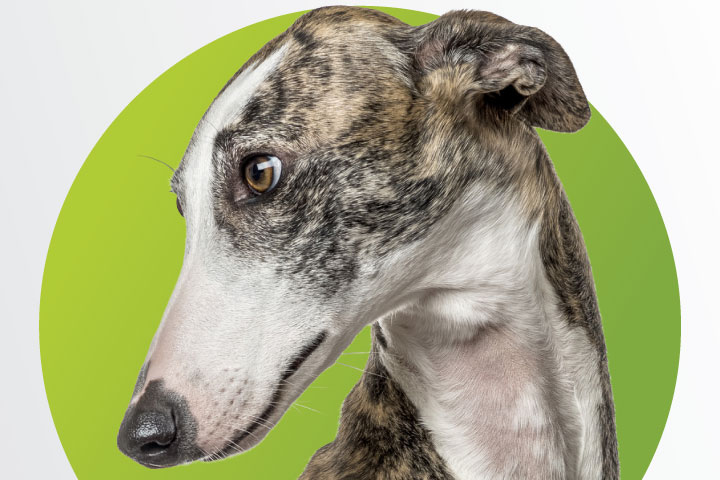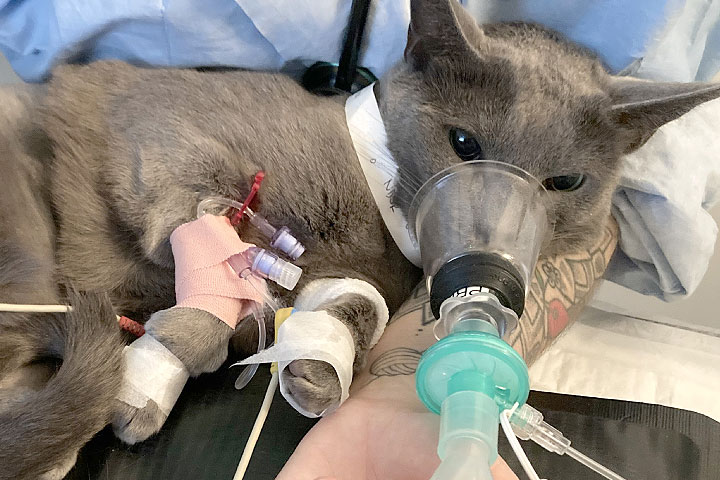
Common small animal anaesthesia myths and misconceptions
Small animal anaesthesia is very much a routine procedure but compared to human anaesthesia (perianaesthetic risk of death 0.002%) could be classed as high risk.
The introduction of new drugs and techniques and specialised staff have made anaesthesia safer in the current practice but even so, when it comes to perioperative fatalities related to sedation or anaesthesia the latest studies demonstrated a death risk of 0.17% in dogs, 0.24% in cats and 1.39% in rabbits (Brodbelt et al. 2017), hence minimising the risks in small animal anaesthesia should be prioritised.
Patient safety starts with a good anaesthesia knowledge and understanding using evidence based medicine rather than anecdotic experience or unwritten rules sometimes based on myths and misconceptions.
The following are just a few of the many myths or misconceptions still widely spread amongst the veterinary community. It is time to debunk those theories and exchange them for actual facts to provide the highest quality and best possible care for our patients.
MYTH: The breeder says this breed reacts to propofol, so this dog should not have propofol
TRUTH: There are specific breeds that may be predisposed to certain anaesthetic problems but there is quite a lot of hearsay and unfounded information coming from internet forums/chats/kennel club:
- Greyhounds (and Sighthounds): It is true and well known that due to their lean body condition, highly lipophilic drugs like thiopental cannot redistribute into fat compartments, prolonging their clinical effect in a very noticeable way. On the other hand not only is the volume distribution of certain drugs a potential problem but also the ability to metabolise them. These breeds tend to lack the enzymatic family P450 (CYP2B11) which is responsible for the metabolism of thiopental and propofol. In greyhounds, prolonged recoveries should be expected with both thiopental and propofol.
- Acepromazine (ACP), boxers and giant breeds: It may be true that boxers are especially sensitive to acepromazine, in fact there are old reports of boxers collapsing after being given this medication. However these particular boxers may have belonged to the same genetic line and currently there is no published evidence suggesting that ACP should never be used in boxers. Still this breed is known for having a high vagal tone and a low heart rate which combined with the typical acepromazine vasodilatory effect could produce syncope or collapse. From this we conclude that acepromazine should be used cautiously in boxers. Giant breeds are also quite sensitive to acepromazine and very small doses often seem enough to get the desired effect. As a rule of thumb, no dog should receive more than 1mg of acepromazine as total dose, as higher doses tend to produce more side effects with no further sedation.
- Collies, Shepherds and other herding breeds: These breeds have potential for the mutation on the MDR-1 gene which encodes for a glycoprotein in charge of transmembrane drug transport. Whenever this mutation is present, it makes the individual very sensitive to particular drugs and in many cases normal doses can be toxic for these patients. Anaesthetic drugs which can be problematic are acepromazine and butorphanol. Although there is no evidence to back the recommendations, current guidelines state that any homozygous individual with this mutation should have no more than a quarter of the recommended dose for these two drugs and in case of an heterozygous individual, half of the dose should be safe.
MYTH: When it comes to anaesthesia, the less drugs the better
TRUTH: This is partially true, we should aim to administer the least amount of effective drugs for our patients. Nonetheless, it is in the patient’s best interest to include a variety of drugs in the anaesthetic protocol. That way we follow a multimodal analgesia and balanced anaesthesia approach where the combination of multiple drugs can achieve the desired effect with a lower dose of each drug so the risk of side effects is minimised.
It is important to choose the correct dose and drug combinations safely, based on the latest research and specific drug pharmacology. An example of a balanced anaesthetic technique would include an alpha-2 agonist as part of the premedication, which may reduce the induction and maintenance anaesthetic agent dose by up to 70%, depending on the drug combination.
Even the administration of analgesic opioids like morphine have shown a MAC reduction for inhalant anaesthetics up to 63%. The use of sedatives and analgesics in a balanced anaesthetic technique will reduce the dose of inhalant, minimising the dose dependent vasodilation and hypotension produced by general anaesthetics. For that reason when it comes to anaesthesia a variety of drugs is often more important than the amount.
MYTH: Opioids are dangerous drugs
TRUTH: On the contrary, opioids are quite safe drugs. Unfortunately there is potential for opioid abuse as people can become addicted and for that reason we tend to call them dangerous drugs. A more accurate way to describe them would be ‘controlled drugs’ as they need to be under tight control in practice due to the obvious legal implications.
Opioids are still the gold standard analgesics for human and veterinary medicine. They do have some adverse reactions which are dose dependent so careful titration to effect is the best approach to avoid any problem. Even so, it is easy enough to recognise and treat opioid side effects, besides they can always be antagonised with an opioid antagonist like naloxone.
One of the most annoying side effects is vomiting and nausea. The use of acepromazine in the premedication at least 20 minutes before the opioid is given may help reduce the chances of vomiting. The route and the choice of opioid can help to minimise this problem, intravenous versus intramuscular and methadone instead of morphine are some examples. Even so there is evidence that the use of antiemetics like maropitant may help to treat and prevent this issue.
In summary opioids are hardly ever dangerous drugs for our patients.
MYTH: Opioids cause hypotension
TRUTH: Opioids are quite safe drugs from the cardiovascular point of view and they hardly ever cause hypotension. There are specific occasions where such situations may arise.
Opioids may decrease the heart rate by increasing vagal tone, if the heart rate is low enough the blood pressure may fall too. The use of an anticholinergic would resolve the bradycardia and the consequent hypotension. On the other hand, certain opioids like pethidine and morphine could cause histamine release and therefore hypotension. To avoid histamine release, pethidine must be administered intramuscularly only and morphine very slowly if the chosen route is intravenous.
So all in all it will be unfair to class opioids as hypotensive drugs as per se they do not have any direct effect on arterial blood pressure.
MYTH: Sevoflurane is much safer, trendier and superior to isoflurane
TRUTH: Isoflurane is still widely used throughout the veterinary world. Sevoflurane and isoflurane are fairly similar when it comes to cardiovascular effects, sevoflurane may have less respiratory depression and when it comes to mask inductions, it is a much better agent having a less pungent smell and being less of an irritant for the airway. The recovery with sevoflurane may be slightly faster and more complete than with isoflurane, nevertheless the presence of long lasting drugs like opioids in the anaesthetic protocol may delay the recovery, independently of the inhalant used.
Overall, there is no need to change to sevoflurane as any significant real advantages still need to be demonstrated. However, brachycephalic breeds may benefit from sevoflurane.
See also Mythbusters: Anaesthesia Unveiled Part II


Case Advice or Arranging a Referral
If you are a veterinary professional and would like to discuss a case with one of our team, or require pre-referral advice about a patient, please call 01883 741449. Alternatively, to refer a case, please use the online referral form
About The Discipline
Anaesthesia

Need case advice or have any questions?
If you have any questions or would like advice on a case please call our dedicated vet line on 01883 741449 and ask to speak to one of our Anaesthesia team.
Advice is freely available, even if the case cannot be referred.
Anaesthesia and Analgesia Team
Our Anaesthesia and Analgesia Team offer a caring, multi-disciplinary approach to all medical and surgical conditions.